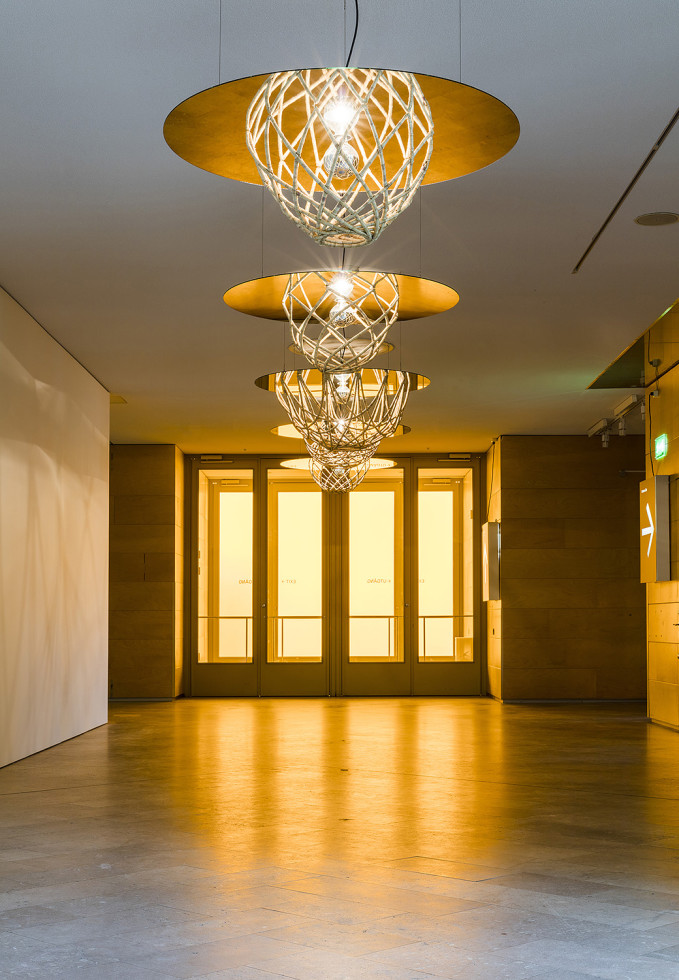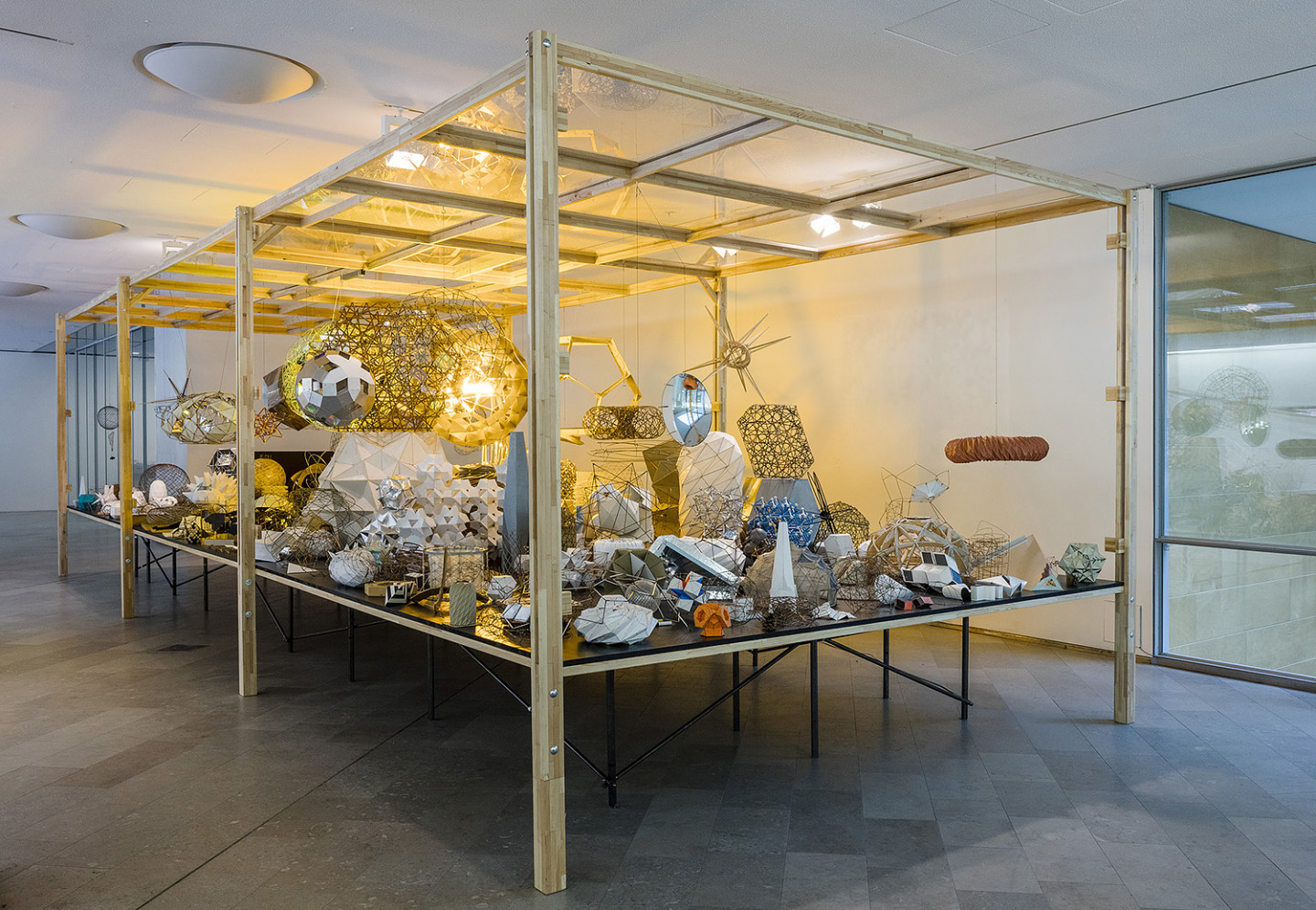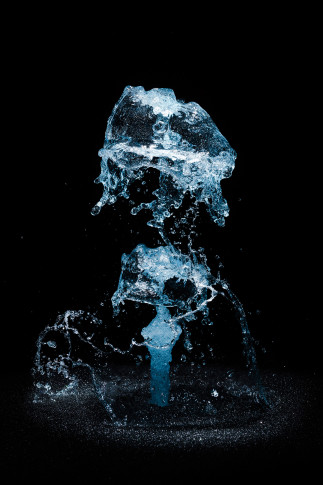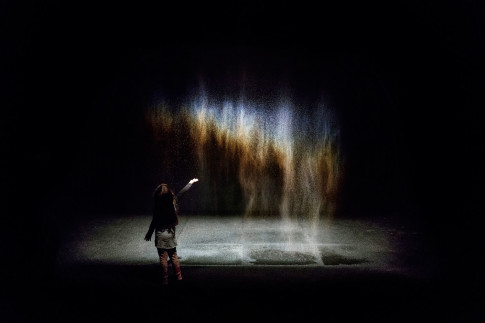
Olafur Eliasson, The complete sphere lamp, 2015 © 2015 Olafur Eliasson. Foto: Anders Sune Berg. Installationsbild, Moderna Museet/ArkDes, Stockholm 2015.
Ideas and shapes
I strongly believe that it isn’t necessary to polarise the fields of art and architecture. Rather, it’s about trying to transgress the traditional boundaries to create a space of inclusion and hospitality, where differences of opinion are not only tolerated but encouraged. When you enter my exhibition, you do not step out of the city of Stockholm and into the protected world of art, but continue the processes of negotiation and co-production that characterise our shared reality. Olafur Eliasson
Many of Eliasson’s projects are set beyond the domain of the art institutions – in the public sphere. One of the more famous of these is the artificial New York City Waterfalls (2008). Other projects were created in partnership with a few of the most prominent contemporary architects, for instance, the pavilion for the Serpentine Gallery in London in 2007, designed by Eliasson in association with Kjetil Thorsen of Snøhetta.
Another example is the facade of the Harpa concert hall and conference centre in Reykjavik (2005-2011), designed by Olafur Eliasson and Studio Olafur Eliasson together with Henning Larsen Architects. The south-facing facade consists of transparent quasi bricks, which were also designed by Eliasson and his studio. The quasi brick, which is used in various ways in several of Eliasson’s works, can be described as a stackable, 12-sided block based on a five-fold symmetry. The shape of the brick resembles the columns of crystallised basalt that occur naturally in Iceland. Like many of Eliasson’s buildings and pavilions, the facade of the concert hall is largely transparent, and the hundreds of quasi bricks are both a structural element and a aesthetic design. Olafur Eliasson was the winner of the Mies van der Rohe Award for architecture in 2010.
The exhibition at Moderna Museet and ArkDes begins with the work Model room (2003), a landscape of geometric models and objects, of which many were created by Eliasson together with the late Icelandic mathematician and architect Einar Thorsteinn. Over the years, this work has evolved into a growing three-dimensional archive; a collection of materialised ideas, of which some of the more recent have been further developed and realised as installations, pavilions and projects.
Model room can also be seen to reflect the artist’s ideas on the importance of turning thought into action. Ideas need to materialise in order to be tried, and this materialisation is significant in itself. Figuratively, this could also be said to apply to democracy issues, and to the sense of being able to influence society and the world at large with our actions. Urban and public spaces can, according to Eliasson, be defined as either inclusive or exclusive. The former are spaces that are possible to influence, while the latter reject any involvement. As a part of the public domain, museums, with their purpose, responsibilities and potential, have long engaged Eliasson. He regards them as one of the few places where people with different perspectives can meet and share the same experience.






